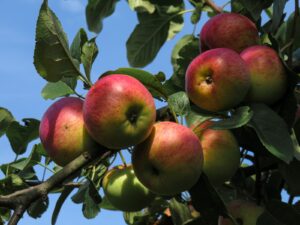Efficient food distribution is crucial for ensuring that everyone has access to safe and nutritious meals. However, traditional supply chains face numerous challenges such as inefficiencies, food wastage, and inequitable distribution. Fortunately, technology is revolutionizing the food distribution landscape, offering innovative solutions to these pressing issues.
Current Challenges in Food Distribution
There are still a lot of communities without proper or any access quality food. Supply chain inefficiencies, including delays, errors, and lack of visibility, hinder the smooth flow of food from farm to fork. These inefficiencies lead to increased costs and food wastage. Additionally, the unequal distribution of food resources exacerbates hunger and malnutrition in certain areas.
Role of Technology in Food Distribution
Technology plays a pivotal role in addressing these challenges. Automation and AI help streamline supply chain management, optimizing processes and reducing errors. The Internet of Things (IoT) enables real-time monitoring of temperature, humidity, and other crucial factors, ensuring the quality and safety of food during transportation. Blockchain technology enhances traceability and transparency, enabling consumers to trust the origin and handling of their food.
Improving Supply Chain Efficiency
Predictive analytics leverages historical data to forecast demand accurately, enabling companies to optimize inventory levels and minimize supply chain disruptions. Robotics and drones offer faster and more precise deliveries, reducing the time and cost associated with transportation. Cloud-based platforms facilitate collaboration and data sharing among stakeholders, enhancing visibility and efficiency across the supply chain.
Reducing Food Wastage
Smart packaging embedded with sensors helps monitor inventory levels and expiration dates, reducing the chances of food spoilage and waste. Data analytics can identify patterns and trends in food wastage, enabling companies to implement targeted strategies for waste reduction. Donation platforms and food-sharing apps connect surplus food with those in need, promoting a more sustainable and equitable distribution of resources.
Ensuring Equitable Food Distribution
Mobile applications play a vital role in connecting surplus food from restaurants, supermarkets, and events with individuals and organizations in need. Geospatial analysis helps identify underserved areas, enabling policymakers and organizations to focus their efforts on improving access to nutritious food in these regions. Crowd-sourced delivery systems provide a cost-effective solution for delivering food to remote areas that are otherwise difficult to reach.
Case Studies of Successful Tech Innovations
- Tech-based redistribution platforms, such as apps that connect food donors with local charities, have significantly reduced food wastage and increased access to food for vulnerable populations.
- Efficient cold chain management using IoT sensors and data analytics has helped maintain the quality and safety of perishable food items during transportation.
- Blockchain-enabled transparent supply chains have provided consumers with greater trust and confidence in the food they purchase.
Opportunities for Professionals in Technology and IT
Professionals in the technology and IT industry have a unique opportunity to contribute to sustainable food distribution. For instance, they can develop innovative solutions that address the challenges faced in this sector. Online courses focused on sustainable development offer professionals the chance to gain valuable knowledge and insights into creating technology solutions that promote efficient, waste-free, and equitable food distribution. These solutions can in turn grow into profitable businesses.
Conclusion
Technology has the power to revolutionize food distribution by improving supply chain efficiency, reducing food wastage, and ensuring equitable access to food resources. Professionals in technology and IT have a crucial role to play in developing and implementing these innovative solutions. By embracing sustainable practices and upgrading their skills through online courses, they can contribute to a more sustainable future where everyone has access to safe and nutritious food.
Enroll in our online courses today and become a catalyst for positive change in the field of sustainable food distribution.













